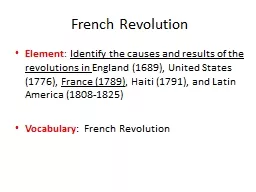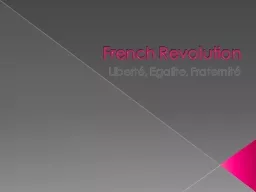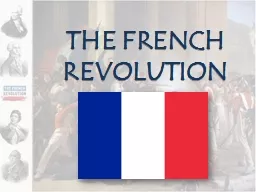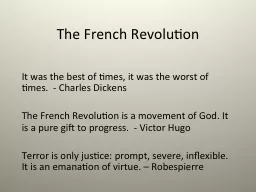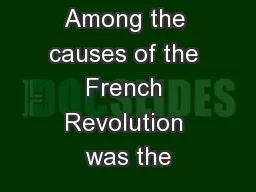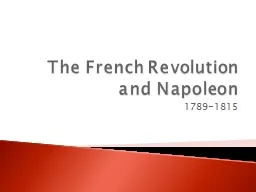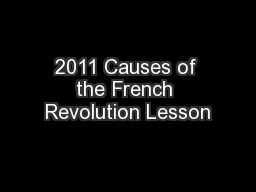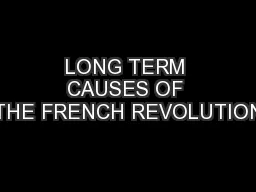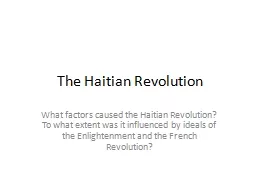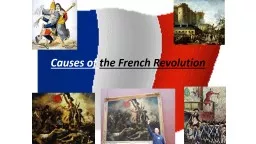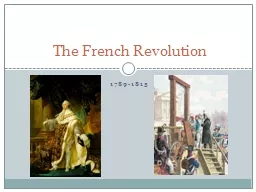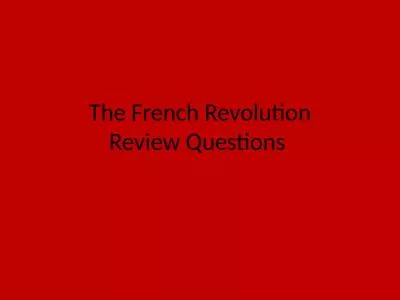PPT-French Revolution Element
Author : min-jolicoeur | Published Date : 2019-06-22
Identify the causes and results of the revolutions in England 1689 United States 1776 France 1789 Haiti 1791 and Latin America 18081825 Vocabulary French Revolution
Presentation Embed Code
Download Presentation
Download Presentation The PPT/PDF document "French Revolution Element" is the property of its rightful owner. Permission is granted to download and print the materials on this website for personal, non-commercial use only, and to display it on your personal computer provided you do not modify the materials and that you retain all copyright notices contained in the materials. By downloading content from our website, you accept the terms of this agreement.
French Revolution Element: Transcript
Download Rules Of Document
"French Revolution Element"The content belongs to its owner. You may download and print it for personal use, without modification, and keep all copyright notices. By downloading, you agree to these terms.
Related Documents

